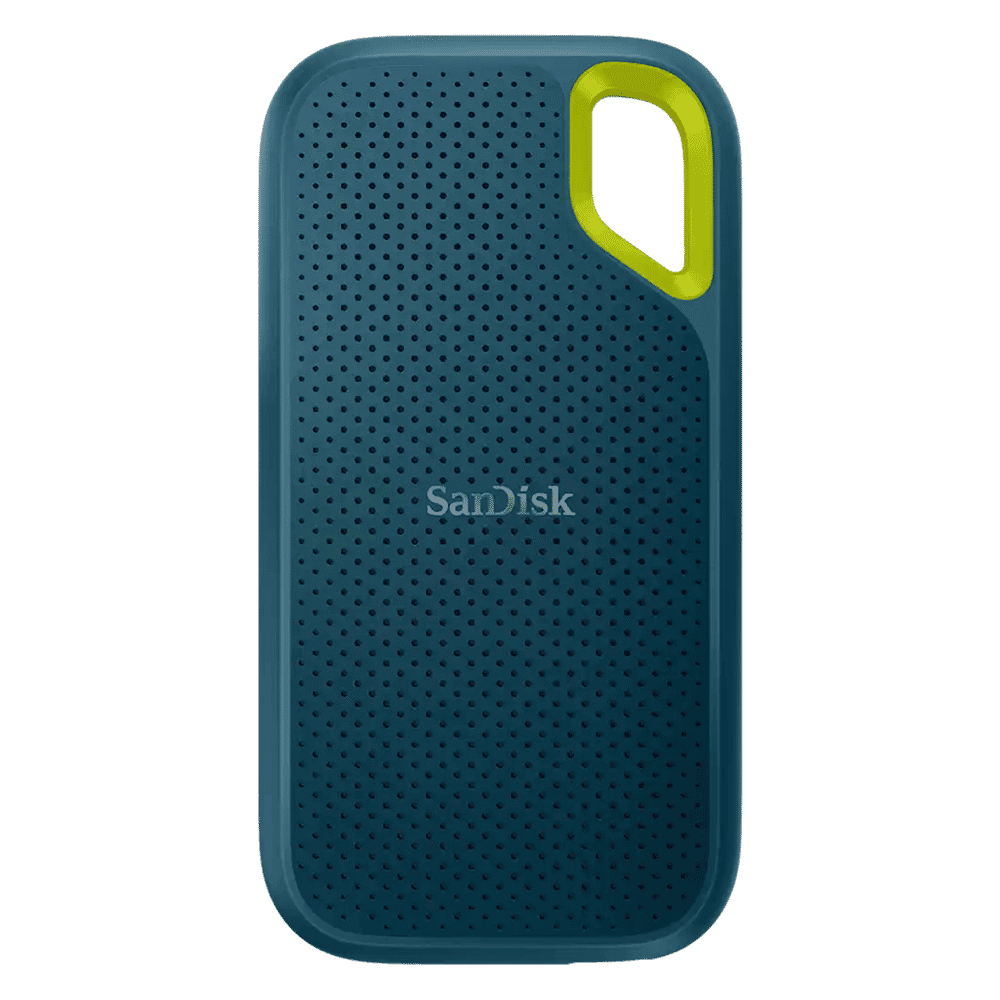%20(Presentation)%20(1600%20x%20600%20px)(75)-dcde2e86-e894-4755-8cca-4b7be7fe8cee.webp&w=3840&q=75)
Consumer Electronics
•04 min read

Buy SanDisk Extreme 1TB USB Type-C (3.2) Portable Solid State Drive (Drop Protection, Black) online at best prices from Croma. Check product details, reviews & more. Shop now!
Ever wondered about the difference between M.2 and NVMe SSDs? As SSD technology evolves rapidly, understanding these nuances becomes essential. This guide breaks down the two technologies and explains why knowing the differences matters for performance, compatibility, and speed. By reading this FAQ-style post, you will gain clear insights and practical answers that help you make an informed decision on your storage needs.
Solid State Drives (SSDs) have transformed the way we store data by replacing traditional hard drives with faster, more reliable solutions. SSDs improve the speed and efficiency of computers, marking a significant change in everyday digital experiences. The evolution from SATA SSDs to M.2 and NVMe SSDs highlights how innovative storage designs can enhance daily computing tasks. When you shop on Tata Neu, every purchase can earn you NeuCoins that unlock exclusive deals and provide seamless shopping experiences.
The journey of SSDs began with SATA technology and advanced to more compact and powerful units like M.2 and NVMe SSDs. These advancements have paved the way for faster data retrieval and smoother multitasking. The technological progress tells a story of innovation that meets both everyday and high-performance computing needs. For example, recent industry tests confirm these performance trends, showcasing the remarkable improvements offered by NVMe technology.
M.2 SSDs are known for their impressive compact form factor and versatility. They are designed to fit in slim laptops and high-performance desktops alike. An important feature to remember is that while all NVMe SSDs that come in the M.2 form factor pack exceptional speed, not every M.2 drive utilises the NVMe protocol; some rely on the older SATA protocol.
M.2 SSDs come in various sizes and are celebrated for their easy installation and compatibility with modern motherboards. Their design ensures that space is optimally used without compromising on performance, making them a perfect fit in portable devices and performance-driven systems. When comparing M.2 SSD performance against traditional SATA options, the advantages truly lie in the technology implemented.
It is a common misconception that all M.2 SSDs perform at lightning speed. In reality, M.2 drives that operate on the SATA protocol may not offer significant speed boosts over standard SATA SSDs. This makes it essential to check the specific protocol in use when making your purchase decision.

Buy SanDisk Extreme 1 TB USB Type-C (3.2) Portable Solid State Drive (Drop Protection, Monterey) online at best prices from Croma. Check product details, reviews & more. Shop now!
NVMe (Non-Volatile Memory Express) is a protocol designed specifically to boost the performance of SSDs by streamlining the communication between storage and the CPU. This enhancement results in reduced latency and impressive multitasking capabilities that are particularly beneficial for tasks demanding high performance such as gaming, content creation, and other intensive applications.
NVMe SSD technology elevates the experience by offering superior data transfer speeds and quicker response times. For those who prioritise speed, NVMe SSDs provide a noticeable lift in operations, reducing wait times during data access. These traits make them ideal for high-performance tasks and environments where efficiency is paramount.
Comparing NVMe SSDs to SATA SSDs, the edge is apparent in speed and overall performance. Whereas SATA drives offer a good level of performance for routine tasks, NVMe drives excel in high-demand scenarios such as video editing or gaming. This distinction is notable when evaluating tasks that benefit from rapid data processing. Recent industry tests confirm these performance trends, showcasing the superior capabilities of NVMe technology.
Insight Corner: Did You Know? Not all M.2 SSDs are NVMe SSDs! M.2 is a versatile form factor, but its performance depends on if it uses the NVMe or SATA protocol. Always check the specifications before purchasing to ensure it meets your needs.
When assessing storage options, it is crucial to know that M.2 refers to the physical form factor while NVMe signifies the protocol that governs data transfer speeds. In many cases, M.2 SSDs that run on the NVMe protocol deliver performance comparable to standalone NVMe drives. However, M.2 SSDs using the SATA protocol will not match the speed of those that support NVMe technology.
The standout benefit of NVMe SSDs is their ability to achieve higher read and write speeds due to the more efficient protocol. For individuals engaged in demanding software tasks, this translates into smoother and faster operations. Meanwhile, if budget considerations are a priority, M.2 drives paired with SATA can offer a solid performance at a more cost-effective price point. Subtle improvements in M.2 SSD performance and NVMe SSD speed highlight their suitability for diverse scenarios.
One of the biggest advantages of today's systems is that NVMe SSDs are designed to work in M.2 slots. However, users should verify that the motherboard in use supports the NVMe protocol to fully harness these benefits. This compatibility makes the process straightforward and encourages a seamless upgrade experience.

Buy SanDisk E30 1TB USB Type-C (3.2) Portable Solid State Drive (Drop Protection, Dark Blue) online at best prices from Croma. Check product details, reviews & more. Shop now!
Choosing between M.2 and NVMe SSDs ultimately depends on your specific needs. If you seek a balance between cost and performance for everyday tasks, a M.2 SSD using the SATA protocol is a practical option. Conversely, for users with intensive computing needs who value speed and enhanced multitasking, NVMe SSDs are the superior choice. These recommendations help align your storage decisions with performance goals and budget considerations.
No, M.2 is a physical form factor for SSDs, while NVMe is a protocol that defines how the data is processed and transferred. An M.2 SSD can operate on either NVMe or SATA, which makes understanding the specifications crucial.
NVMe SSDs are typically faster than M.2 SSDs that run on the SATA protocol. However, an M.2 SSD with the NVMe protocol will perform at similar speeds to other NVMe drives, ensuring high performance across demanding tasks.
This largely depends on your computing needs. NVMe SSDs deliver superior speed and performance, ideal for intensive applications like gaming and video editing. Meanwhile, traditional SSDs using SATA protocols are more cost-effective and sufficient for everyday use.
Yes, NVMe SSDs are designed to fit into M.2 slots, provided that your motherboard supports the NVMe protocol. It's always a good idea to check your system specifications to confirm compatibility.
Understanding the differences between M.2 and NVMe SSDs is key to selecting the right storage solution for your needs. M.2 represents the form factor while NVMe is the protocol that delivers the enhanced performance. M.2 SSDs can work with both SATA or NVMe, and this choice directly impacts speed and overall functionality. NVMe SSDs offer exceptional speed and multitasking capabilities, making them an excellent option for high-performance applications. Choose the option that best aligns with your usage requirements, budget, and performance expectations, and enjoy a seamless shopping experience backed by transparent, customer-first insights. When you shop on Tata Neu, every purchase can earn you NeuCoins that unlock exclusive deals and provide seamless shopping experiences.